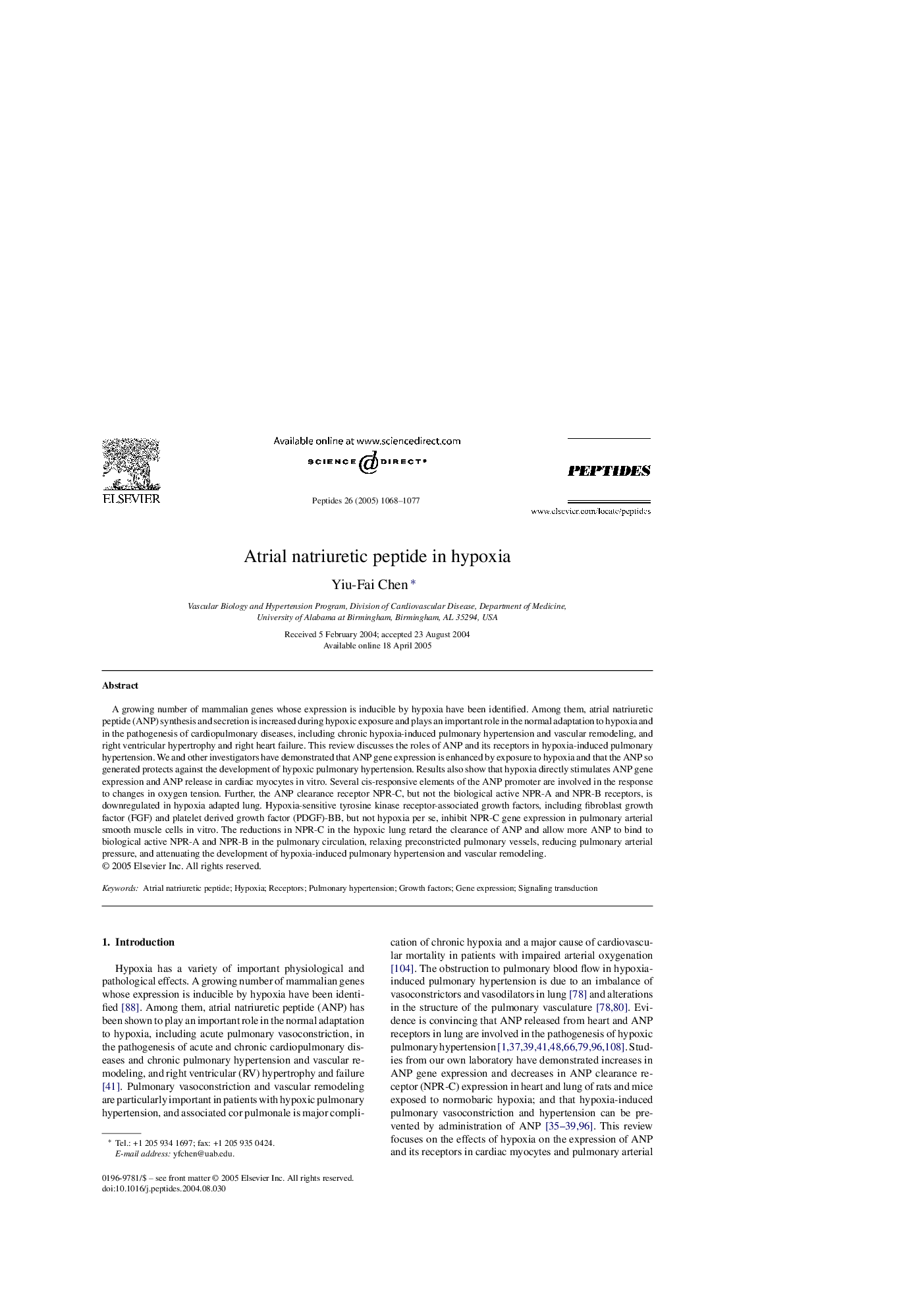| Article ID | Journal | Published Year | Pages | File Type |
|---|---|---|---|---|
| 10836251 | Peptides | 2005 | 10 Pages |
Abstract
A growing number of mammalian genes whose expression is inducible by hypoxia have been identified. Among them, atrial natriuretic peptide (ANP) synthesis and secretion is increased during hypoxic exposure and plays an important role in the normal adaptation to hypoxia and in the pathogenesis of cardiopulmonary diseases, including chronic hypoxia-induced pulmonary hypertension and vascular remodeling, and right ventricular hypertrophy and right heart failure. This review discusses the roles of ANP and its receptors in hypoxia-induced pulmonary hypertension. We and other investigators have demonstrated that ANP gene expression is enhanced by exposure to hypoxia and that the ANP so generated protects against the development of hypoxic pulmonary hypertension. Results also show that hypoxia directly stimulates ANP gene expression and ANP release in cardiac myocytes in vitro. Several cis-responsive elements of the ANP promoter are involved in the response to changes in oxygen tension. Further, the ANP clearance receptor NPR-C, but not the biological active NPR-A and NPR-B receptors, is downregulated in hypoxia adapted lung. Hypoxia-sensitive tyrosine kinase receptor-associated growth factors, including fibroblast growth factor (FGF) and platelet derived growth factor (PDGF)-BB, but not hypoxia per se, inhibit NPR-C gene expression in pulmonary arterial smooth muscle cells in vitro. The reductions in NPR-C in the hypoxic lung retard the clearance of ANP and allow more ANP to bind to biological active NPR-A and NPR-B in the pulmonary circulation, relaxing preconstricted pulmonary vessels, reducing pulmonary arterial pressure, and attenuating the development of hypoxia-induced pulmonary hypertension and vascular remodeling.
Keywords
Related Topics
Life Sciences
Biochemistry, Genetics and Molecular Biology
Biochemistry
Authors
Yiu-Fai Chen,
